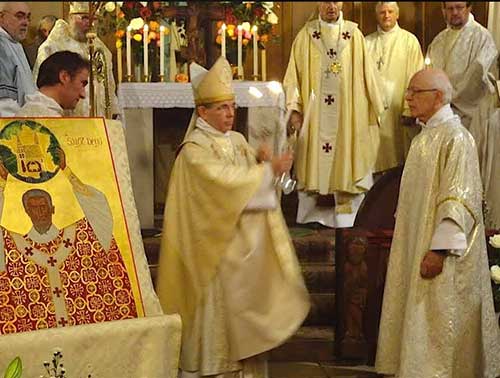
Well-educated Western Christians will probably know that under the jurisdiction of Pope Francis there are Eastern Rite Churches. These follow Eastern Christian liturgy, and Eastern Christian practices. In the current Roman Catholic (energetic) debate about celibacy, for example, it must not be forgotten that in Eastern Rite Churches under the Vatican’s authority, priests can be married or celibate. [Eastern Rites are not without controversy – but that is another story].
But Western Rite Orthodoxy is less well known. Orthodoxy has about 250 million adherents in the world – making it the world’s second largest Christian grouping [Roman Catholicism being the largest]. In the West, Orthodoxy has tended to be a church of immigrants, retaining their language and practices from whence they came. Some Orthodox groups, however, are using the language of the country in which they now find themselves. They also adapted Western liturgical rites, forming what is termed Western Rite Orthodoxy. The Roman Rite or Anglican rites are adapted to Orthodox theology and used in the local vernacular. Some might use the Western Liturgy of St. Gregory. This development has progressed throughout a century or so.
Most would not notice the changes to the words of the The Roman Rite or Anglican rites. The filioque (“and the Son”) is removed from the Creed, restoring it to the original agreement – a practice already common in Anglicanism and encouraged by the Lambeth Conference. And the epiclesis (invoking the Holy Spirit on the bread and wine) in the Eucharistic Prayer might be “strengthened” that the Holy Spirit transform the bread and wine in the Eucharist.
Historically, and keeping things simple, until the split between East and West in 1054, all Christians were in communion with the Five Patriarchates (Rome, Constantinople, Jerusalem, Antioch, Alexandria). After the 1054 schism, the West increasingly followed practices and developments endorsed by the Bishop of Rome.
It is clear that Anglicanism in its liturgical renewal in the last half century is often able to be seen as closely akin liturgically to Western Rite Orthodoxy. Those aligned with Canterbury have looked East, beyond Wittenberg and Geneva, beyond Rome, to Eastern Orthodoxy. Every new (ie other than the BCP) Eucharistic Prayer, for example, authorised in NZ Anglicanism, has the Orthodox structure of the epiclesis following the Last Supper story. And, as I indicated, there are Anglican Prayer Books that have restored the Nicene Creed without the filioque addition.
Find out more: The Orthodox West
Critique of the Western Rite by Protopresbyter Alexander Schmemann
A Western Orthodox parish
On the Western Rite Edict of Metropolitan Anthony (Bashir)



A great summary of an interesting phenomenon in Christianity.